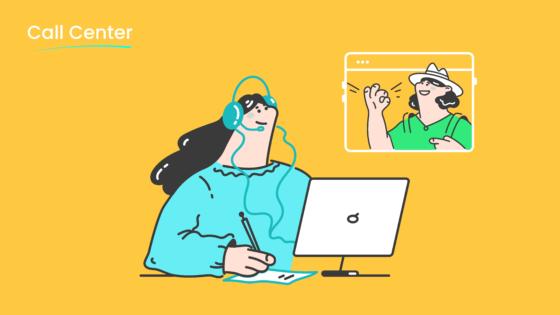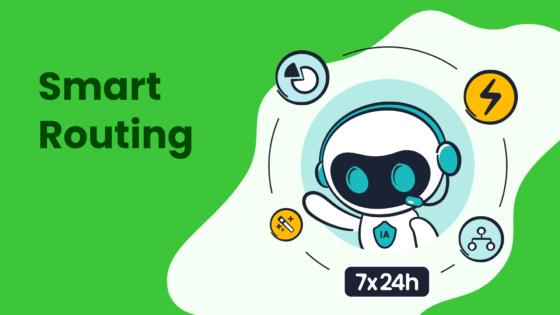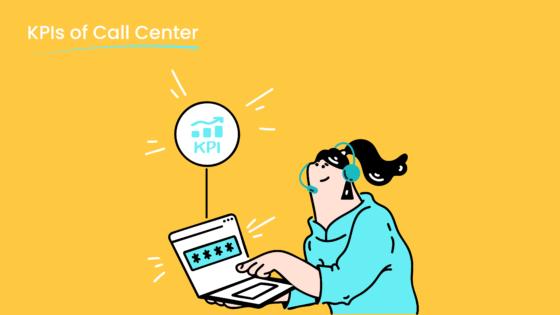Boost Success with 15 Call Center Training Techniques for Managers

Effective call center training techniques help you turn new agents into confident problem solvers. When you use targeted call centre training and call center coaching, you boost both agent retention and customer satisfaction. Recent studies show that ongoing contact center training and clear onboarding reduce agent stress and turnover, while strong coaching and skill tracks help agents see a future in your team. With Sobot AI and the Sobot call center, you get innovative tools for agent training, coaching, and monitoring. Explore these proven call center techniques and see how the right call centre training can transform agent performance and satisfaction.
Onboarding Essentials

Orientation
You want your new agents to feel welcome and ready from day one. A strong orientation sets the stage for every other part of agent training. When you start with a comprehensive onboarding program, you help agents understand your company’s mission, values, and goals. This step connects them to your team and builds trust. According to a Harvard Business Review study, structured orientation can boost new hire productivity by 62% (source). That’s a huge jump! You can make orientation even better by:
- Sharing a clear agenda so agents know what to expect.
- Using digital tools to make paperwork easy.
- Introducing leadership and mentors early.
- Offering microlearning through a learning management system.
Sobot’s unified workspace helps you deliver this foundational onboarding experience by giving agents access to everything they need in one place. With the right call center training techniques, you set your team up for success from the start.
Shadowing
Shadowing is one of the most effective methods in agent training programs. You pair new agents with experienced team members so they can watch real calls and learn proven techniques. This hands-on approach helps agents build confidence and pick up skills faster. Shadowing top performers lets new hires see how to handle tough calls, use scripts, and manage customer needs. It also creates a sense of community and support, which lowers early turnover. Many high-performing call centers use shadowing as a key part of their training programs. You can combine shadowing with product knowledge sessions and CRM walkthroughs for a well-rounded training program.
Tip: Use recorded calls—both great and not-so-great—as part of your agent training. Sobot’s call recording feature makes it easy to review real examples and discuss what works best.
Expectations
Clear expectations are the backbone of every successful onboarding. You need to tell agents exactly what you expect from them, right from the start. This includes sharing performance goals, customer service standards, and compliance rules. When you set clear goals, agents know how to succeed and feel more motivated. Ongoing training and regular feedback help agents stay on track and grow their skills. The best call center training techniques always include:
- Setting clear, measurable goals.
- Providing the right tools and resources.
- Giving regular feedback and support.
- Offering opportunities for career growth.
Sobot’s analytics and reporting tools let you track agent progress and spot areas for improvement. With these methods, you create a culture where agents feel empowered and ready to deliver great service.
Actionable Coaching
One-on-One Sessions
One-on-one sessions are the heart of call center coaching. You get a chance to connect with each agent and focus on their unique strengths and challenges. Regular coaching sessions help you spot trends in agent training and offer support where it matters most. For new agents, weekly or biweekly meetings work best. These sessions let you review real call interactions, set clear goals, and track improvement. For experienced agents, monthly check-ins keep growth steady without breaking their workflow.
Tip: Use Sobot’s call recording and analytics tools to review agent interactions together. This makes feedback specific and actionable.
Here’s a quick look at how often you should meet:
| Agent Type | Coaching Frequency | Focus |
|---|---|---|
| New Agents | Weekly or Biweekly | Product training, scripts, confidence |
| Experienced Agents | Biweekly or Monthly | KPIs, tone, personal development |
Frequent call center coaching builds a coaching culture where agents feel valued and motivated. You help agents see their progress and celebrate every improvement.
Real-Time Feedback
Real-time feedback is a game changer in agent training. When you give feedback during or right after a call, agents can adjust right away. This kind of coaching helps agents fix mistakes before they become habits. Real-time feedback also boosts agent confidence and reduces errors. You can use Sobot’s AI-powered analytics to spot coachable moments and give instant tips.
- Real-time analytics help agents personalize customer interactions.
- Immediate feedback reduces escalations and improves first call resolution.
- Ongoing coaching cycles keep service quality high.
Call center coaching works best when you mix real-time feedback with regular agent training. This approach leads to steady improvement and happier agents.
Performance Reviews
Performance reviews are your chance to look at the big picture. You use key metrics like Average Handle Time (AHT), First Contact Resolution (FCR), Customer Satisfaction Score (CSAT), and Net Promoter Score (NPS) to measure agent performance. These reviews help you spot trends, set new goals, and plan future training.
A strong call center coaching program uses data from Sobot’s dashboards to track agent progress. You can see which agents need more support and which ones are ready for new challenges. Performance reviews also give you a chance to recognize top agents and build a coaching culture that values growth.
- Use clear KPIs to guide coaching and agent training.
- Celebrate every improvement, big or small.
- Set SMART goals so agents know what to work on next.
With actionable coaching, you turn every review into a step forward. You help agents grow, boost agent performance, and create a team that loves to learn.
Technology in Call Center Training Techniques


Technology changes the way you approach call centre training. With the right tools, you can make your training more effective, engaging, and measurable. Sobot Voice/Call Center gives you a powerful platform for agent training and performance monitoring. You get features like an AI-powered Voicebot, a unified workspace, and real-time analytics. These tools help you use the best techniques for call centre training and boost your team’s results.
Call Recording
Call recording is one of the most important call centre training techniques. When you record calls, you can listen to real conversations and spot what works and what needs improvement. Here’s how call recording helps your training:
- You can measure key metrics like First Call Resolution (FCR), Average Handling Time (AHT), and Customer Satisfaction (CSAT).
- Recordings make it easy to give fair and accurate feedback.
- Agents can review their own calls and learn from both good and tough moments.
- Supervisors can use recordings for real-time coaching and reduce repeated mistakes.
- You get clear examples for compliance and quality assurance.
Sobot’s call recording and analytics features let you turn every call into a learning moment. You can use these recordings to create practical training sessions and improve agent performance.
E-Learning
E-learning has changed call centre training for the better. You can deliver lessons online, so agents learn at their own pace. Studies show that e-learning increases retention rates by up to 60%, compared to just 8-10% for classroom training (source). Gamified e-learning boosts completion rates by 50%. With Sobot’s unified workspace, you can share e-learning modules, videos, and quizzes with your team. This makes training flexible and easy to access, even for remote agents.
| Metric | E-learning Modules | Traditional Classroom Training |
|---|---|---|
| Retention Rates | 25-60% | 8-10% |
| Productivity Increase | 40-60% | N/A |
| Cost Savings | Up to 50% | N/A |
| Completion Rates (with gamification) | +50% | N/A |
| Flexibility & Accessibility | High | Limited |
E-learning supports different learning styles and keeps your call centre training up to date.
Gamification
Gamification makes call centre training fun and motivating. You add game elements like points, badges, and leaderboards to your training. This keeps agents engaged and encourages them to reach their goals. Research shows that gamification increases employee engagement by 29% and boosts productivity for 90% of contact center employees. You can use mini-challenges, quizzes, and real-time feedback to help agents build skills faster. Sobot’s analytics let you track progress and celebrate wins, which helps create a positive team culture.
Tip: Use gamification to reward agents for completing training modules or hitting performance targets. This makes learning feel like a game and keeps everyone motivated.
With the right technology, you can use these techniques to make your call centre training more effective. Sobot Voice/Call Center gives you the tools you need to train, coach, and inspire your team every day.
Performance Monitoring
Keeping an eye on agent performance is key to call center coaching. When you track the right numbers, you spot where agents shine and where they need more coaching. This helps you drive improvement, boost satisfaction, and keep your team motivated. Let’s break down how you can use KPIs, data analysis, and recognition to get the best results from your agents.
KPIs
You need to know which numbers matter most for call center coaching. The right KPIs show you how well your agent training works and where you can make improvement. Here’s a quick look at the most important KPIs for agent performance and call center coaching:
| KPI | Relationship to Call Center Training Program Success |
|---|---|
| Customer Satisfaction (CSAT) | Declines with poor training; well-trained agents improve customer service quality and brand loyalty. |
| Employee Satisfaction | Low when training is inadequate; proper training reduces stress and turnover by supporting agent preparedness. |
| Sales Conversion Rates | Improved by training in sales techniques and product knowledge, enabling agents to build trust and convert leads effectively. |
| Revenue | Directly linked to training that enhances sales skills such as upselling, cross-selling, and closing techniques. |
| Average Handle Time (AHT) | Increased AHT results from insufficient training; training in communication and workforce management reduces call duration. |
| First Call Resolution (FCR) Rate | Enhanced by training that equips agents to resolve issues on first contact, improving productivity and customer outcomes. |
| Quality Assurance (QA) | Declines with poor training; comprehensive training ensures consistent, high-quality customer interactions and adherence to SOPs. |
When you focus on these KPIs, you see real improvement in agent performance and satisfaction. Sobot’s analytics dashboard makes it easy to track these numbers and spot trends in agent interactions.
Data Analysis
Data analysis helps you find out where your agents need more coaching. You can use Sobot’s real-time analytics to dig into every call and see what’s working. Here’s how you can use data analysis for call center coaching and improvement:
- Collect and segment data from agent interactions, like call recordings and feedback.
- Analyze the data to spot skill gaps in communication, product knowledge, or problem-solving.
- Look for patterns in agent performance over time.
- Use tools like call evaluation forms and transcription to make your review more accurate.
- Build targeted coaching programs based on what you find.
- Keep checking agent progress to make sure your coaching leads to improvement in quality and satisfaction.
Tip: Sobot’s unified workspace lets you review agent interactions and performance data in one place, making it easier to spot where coaching is needed.
Recognition
Recognition is a powerful part of call center coaching. When you celebrate agent wins, you boost motivation and keep agents engaged. Here are some ways you can use recognition to drive improvement and quality in your team:
- Give specific, sincere praise for great agent performance and quality interactions.
- Train managers to deliver recognition that feels real and personal.
- Use different types of recognition, like peer nominations, public shout-outs, or special privileges.
- Recognize agents soon after their achievements for the biggest impact.
- Personalize recognition—some agents like public praise, others prefer a private thank you.
- Try programs like employee-of-the-month or peer-to-peer awards to build a positive team culture.
When you use recognition as part of your call center coaching, you help agents feel valued. This leads to higher satisfaction, better agent performance, and more improvement across your team.
Soft Skills in Agent Training
Great call centers do more than teach scripts and processes. You need to help your agents build strong communication and soft skills. These skills turn every call into a chance to connect, solve problems, and build loyalty. Let’s look at three of the most important soft skills for every agent.
Empathy
Empathy is the heart of customer service. When your agents show empathy, customers feel heard and valued. This skill helps agents connect with people, even when calls get tough. Research shows that customer satisfaction jumps by 35% when agents use genuine empathy. First Call Resolution rates also rise by 20% when agents connect emotionally with customers (source). Empathy training works best when you use role-playing, active listening exercises, and real call reviews. You can use Sobot’s call recording feature to replay calls and practice empathy in real situations.
Tip: Encourage your team to pause, listen, and respond with care. Even a simple “I understand how you feel” can calm a frustrated customer.
Empathy-driven agents build trust and make customers more willing to share their real concerns. This leads to faster solutions and happier customers.
Conflict Resolution
Every agent faces tough calls. Conflict resolution skills help agents turn angry customers into loyal fans. Here are some proven steps your agents can use:
- Listen without interrupting.
- Show empathy and let customers express their feelings.
- Stay calm and use a gentle tone.
- Offer clear solutions and involve the customer in the process.
- Apologize sincerely when needed.
- Escalate the issue if you can’t solve it right away.
Patience and emotional intelligence help agents keep control and avoid taking things personally. When agents use these steps, they lower stress for everyone and keep calls on track.
Note: Sobot’s unified workspace gives agents quick access to customer history, so they can resolve issues faster and with more confidence.
Personalization
Personalization makes every customer feel special. When agents remember a customer’s name, past issues, or preferences, it shows they care. Studies say 80% of people prefer brands that offer personalized experiences (source). Personalized service builds trust and keeps customers coming back.
Ways your agents can personalize service:
- Use the customer’s name and mention past interactions.
- Adapt your communication style to match the customer’s mood.
- Follow up after a call to check if the issue was resolved.
- Use CRM data to tailor solutions and prevent repeat problems.
Sobot’s omnichannel solution helps agents see all customer data in one place. This makes it easy to personalize every call and boost loyalty.
Customers remember how you made them feel. Personal touches turn a simple call into a lasting relationship.
Continuous Contact Center Training
Continuous contact center training keeps your team sharp and ready for anything. You want your agents to grow, adapt, and stay motivated. When you build a culture of ongoing learning, you see real improvement in performance and customer satisfaction. Sobot’s omnichannel solution makes it easy to deliver training programs, track progress, and share knowledge across your team.
Workshops
Workshops bring your agents together for hands-on learning. These sessions help everyone stay up to date with new skills, industry trends, and best practices. You can use workshops to introduce new products, practice communication, or role-play tough customer scenarios. Real-time workshops, whether in-person or online, let agents ask questions and get immediate feedback. Research shows that offering workshops, e-learning modules, and mentorship programs keeps agents engaged and reduces turnover. Cross-training in different channels also boosts versatility and loyalty. Sobot’s unified workspace lets you organize workshops and share resources, so every agent gets the support they need.
Peer Learning
Peer learning is a powerful way to build teamwork and confidence. When agents coach each other, they share tips, solve problems, and celebrate wins together. Structured peer coaching programs help agents learn faster and feel more connected. You can set up regular check-ins, feedback sessions, or group discussions. Using tools like Sobot’s analytics, you track progress and spot areas for improvement. Peer learning leads to better call quality, faster training, and higher morale. It also creates a supportive environment where everyone feels valued.
Industry Updates
Staying current is key in contact center training. Regular industry updates help agents handle new products, changing rules, and customer expectations. You can use workshops, webinars, or e-learning to keep your team informed. Many call centers train agents on new tech, like 5G or updated payment systems, to stay ahead. Sobot’s analytics help you find training gaps and tailor sessions for maximum improvement. When agents know the latest trends, they answer questions with confidence and deliver top-notch service.
Tip: Make industry updates part of your regular training program. This keeps your team competitive and ready for any challenge.
Overcoming Training Challenges
Every call center manager faces challenges when rolling out new training programs. You want your team to grow, but sometimes change feels tough. Let’s look at how you can handle the biggest hurdles in training, coaching, and learning.
Change Management
Change can make agents nervous, especially when you introduce new training methods or technology. You can make things easier by:
- Talking openly about why the change matters.
- Involving supervisors in coaching and communication.
- Using team huddles and feedback sessions to hear concerns.
- Offering refresher training and online learning programs to keep everyone on track.
When you address fears early, agents feel more confident. Sobot’s unified workspace helps you share updates and resources quickly, so no one feels left out. You can also track progress with KPIs and adjust your approach as needed. Celebrate small wins to boost morale and show that your training works.
Learning Styles
Not every agent learns the same way. Some like videos, others prefer hands-on practice or group discussions. To reach everyone, you should use different training methods:
- Mix instructor-led workshops, videos, and interactive modules.
- Add peer learning, group projects, and mentorship for social learners.
- Offer self-paced e-learning and microlearning for flexibility.
- Use gamification and in-app guides for real-time support.
You can also ask for feedback and use self-assessment tools to see what works best. Sobot’s omnichannel solution lets you deliver training in many formats, making it easy to keep your team engaged and motivated.
Consistency
Consistency in training and coaching leads to better results. You want every agent to get the same high-quality experience. Here’s how you can do it:
- Start with strong onboarding and shadowing.
- Use AI-powered quality assurance for real-time feedback.
- Update training materials every few months.
- Combine live and virtual training to fit everyone’s needs.
- Track KPIs like First Call Resolution and Customer Satisfaction.
With Sobot’s analytics, you can spot gaps and make sure your coaching and training stay on target. Consistent methods help agents feel supported and ready to deliver great service every time.
You can boost your call center’s results by using these 15 training techniques. When you focus on training, you see real gains in agent engagement, customer satisfaction, and efficiency. Speech analytics and real-time feedback help you spot issues and give coaching right away. Sobot’s Voice/Call Center and omnichannel solutions make training easy and track progress. Check out the table below to see how training impacts your key numbers:
| Metric | Training Impact |
|---|---|
| CSAT | Higher with targeted training |
| AHT | Lower after training and QA |
| FCR | Better with problem-solving training |
| NPS | Improved by agent training |
Keep your team growing with ongoing training and the right tools. Explore Sobot’s solutions to make every training session count.
FAQ
What are the most important call center training techniques for new managers?
You should focus on clear onboarding, real-time feedback, and regular agent training. Use call recording and gamification to keep things fun. Sobot’s unified workspace makes it easy to track progress and coach your team. These call center training techniques help new managers build strong teams.
How does agent training improve customer satisfaction?
Agent training gives your team the skills to solve problems fast. Well-trained agents boost CSAT scores by up to 35% (source). Sobot’s call center coaching tools help you spot gaps and deliver targeted support, so your customers always get great service.
Can technology make call centre training more effective?
Absolutely! Technology like Sobot’s Voice/Call Center lets you use call recording, AI-powered analytics, and e-learning. These tools help you deliver contact center training that fits every learning style. You can track agent training results and adjust your coaching for better outcomes.
How often should I update my contact center training program?
You should review your call centre training every few months. Customer needs and products change fast. Sobot’s analytics help you spot trends and update your agent training plan. Regular updates keep your team sharp and ready for anything.
See Also
Effective Strategies For Managing Call Center Quality
Ways To Improve Call Center Results Through Monitoring
A Guide To Deploying Omnichannel Contact Center Systems
Key Capabilities Of CRM Software For Call Centers
Understanding The Efficient Operation Of Call Center Automation
